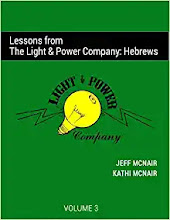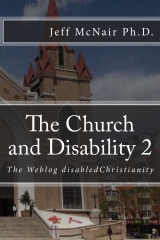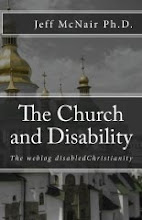I am back from vacation. Had a great time thanks to a friend of mine, Stan Swartz. Thanks Stan!
Community is a critical factor in the lives of individuals with disabilities. One can hardly consider the spiritual life and development of these individuals without being aware of the role of community. Specifically, community plays a role in the spiritual development of these individuals. Fowler (1981) describes stage two of his "stages of faith" as being the connectedness one feels upon recognizing a world that includes more than one's self. Fowler recognizes that the first step of growth occurs through belongingness. The relationships which comprise a community can a) facilitate spiritual growth, b) be an evidence of spiritual growth and c) define the parameters by which spiritual growth is described for these individuals. This is true for all people, but perhaps in particular in relation to individuals with disability.
It also appears that community is the goal for those endeavoring to serve persons with disabilities, whether they approach work with these individuals from a secular or religious perspective (or at least should be). But what exactly is it that we are after when we say we desire community, and why do we desire it?
We could simply reply with the three areas listed above. However, such a reply doesn't provide the specifics we require to determine whether or not the goals of our community efforts have been achieved.
The state attempts to require community through enforced physical integration (as in the Americans with Disabilities Act, inclusion in schools, and programs to facilitate less restrictive settings at work and in independent living). However, the state also recognizes that although physical integration may lead to social integration, there are no guarantees that the former will lead to the latter. In fact, the supports necessary to facilitate the former often preclude the latter from occurring. The state in its efforts to facilitate community life, in the end often frustrates the development of community by getting in the way. For example, job coaches may move into a work environment to provide "supports" with no notion of the types of supports that exist naturally in that work environment (McNair & Rusch, 1991). A thorough knowledge of the environment should lead to the "light touch" that is required.
The church, however, needs to find its uniqueness in the world in relation to a variety of roles, including involvement in the lives of individuals with disabilities. As Clapp (1996) states, "For centuries, most Christians have been eager to adapt to the world and tell it that it is right. So doing, we make ourselves redundant" (p 23).
Yet even when we aren't redundant, we can often be perceived as such because of the increasingly irreligious experience of people and the debased standard of human interaction embraced by the multitudes. The church's redundancy might be perceived in two ways. First the church may actually be redundant in offering many of the same things (supports, services, programs, etc.) as secular society, or the state. Secondly, the church may be simply perceived as redundant because of the lack of experience, particularly among direct care workers, with the church. Now related to the former, if a natural setting like a church and a contrived setting orchestrated by a state agency both provide the same service to the same individual, it is arguable that the state is being redundant because the church is natural. A majority of people do not rely on the state for services although a significant percentage of people do rely on religious settings. The state, in spite of efforts to attempt to develop or find natural supports, does not often see itself as redundant, as it cannot imagine the kind of community represented by the church as actually being in existence, as unchurched caseworkers or other professionals do not have such church experience.
McNair
Wednesday, August 11, 2004
Subscribe to:
Post Comments (Atom)











No comments:
Post a Comment